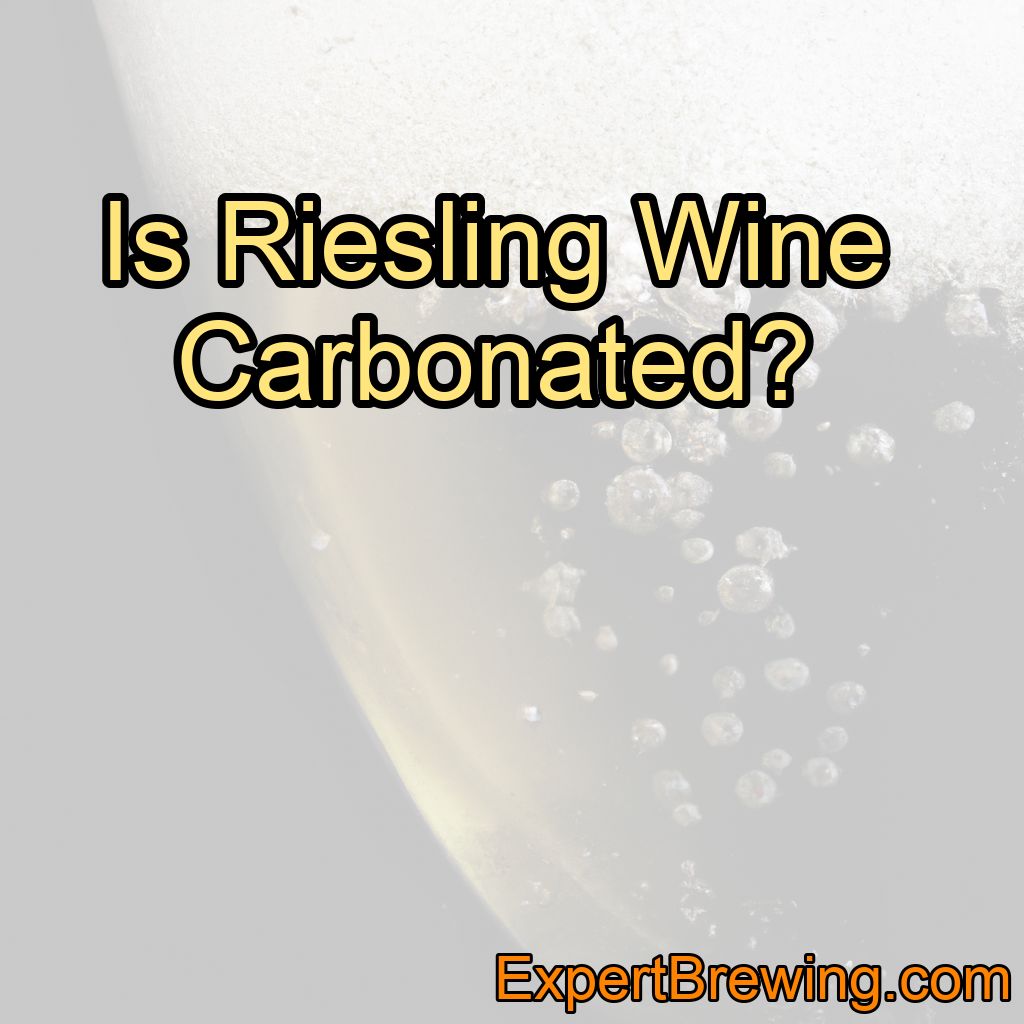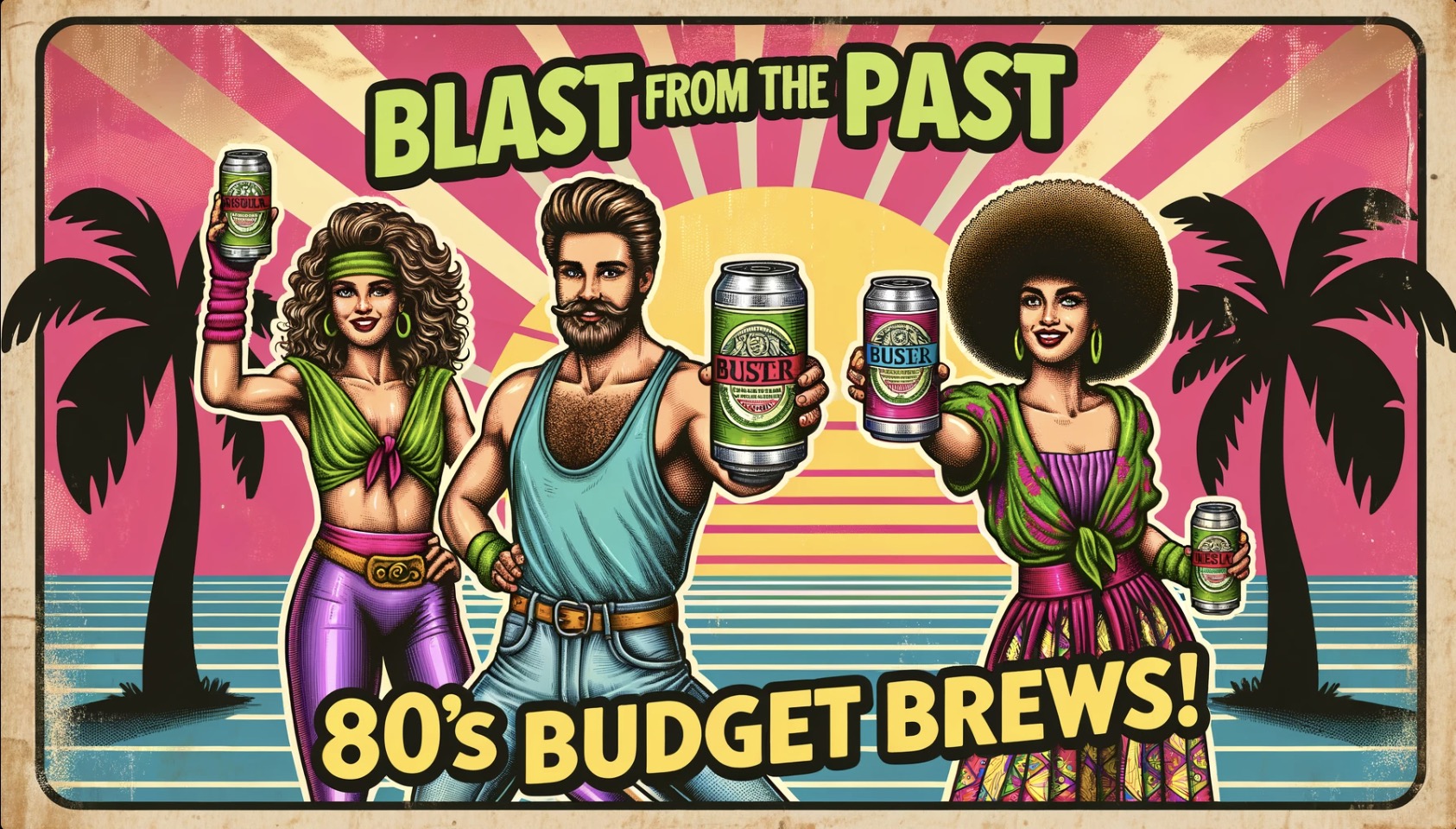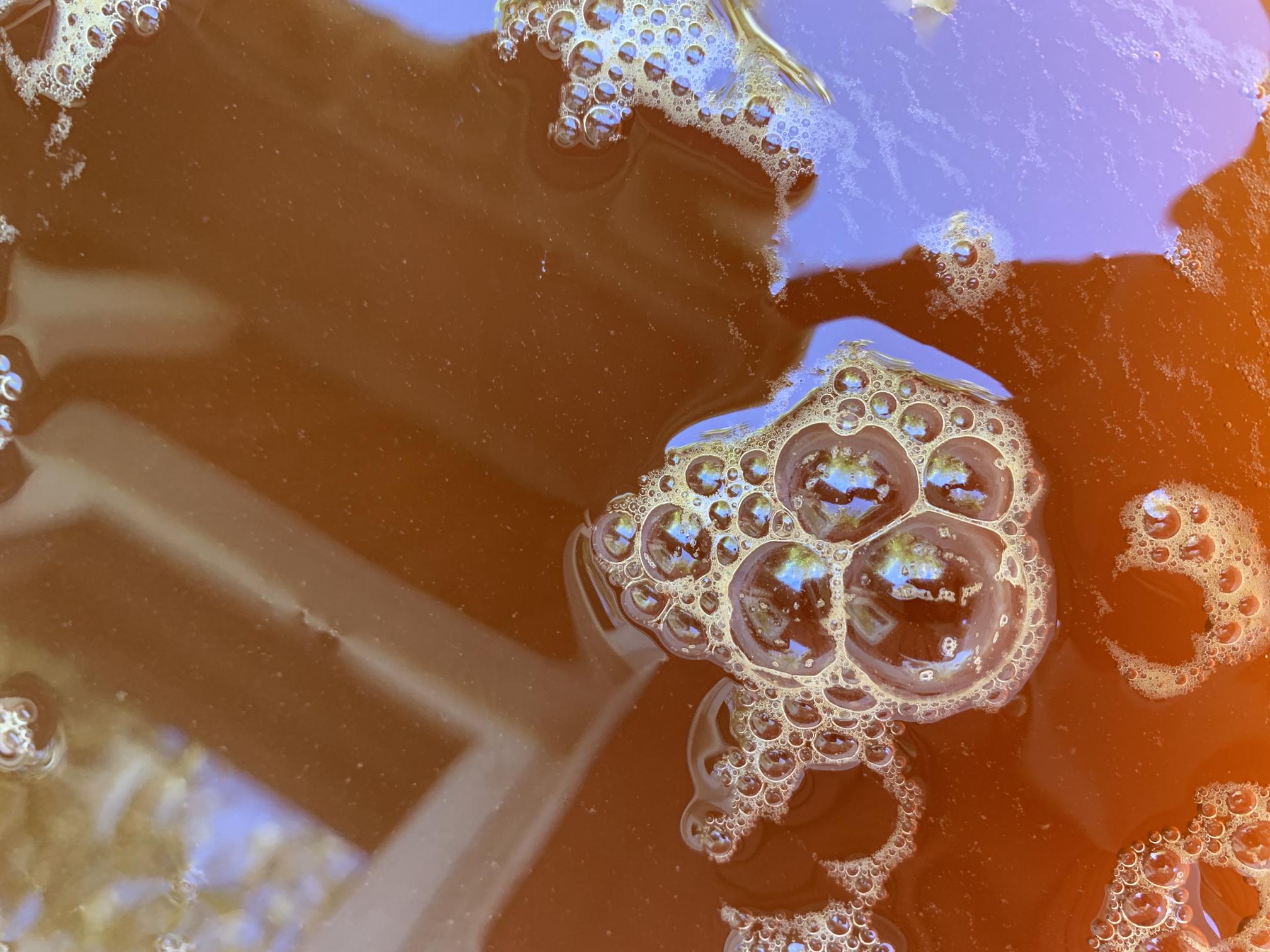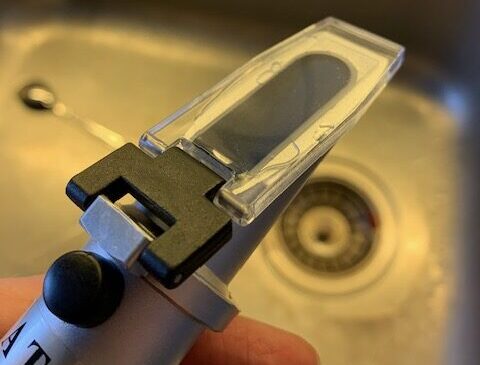Is Riesling wine carbonated? The short answer is no, Riesling wine is not typically considered a carbonated wine.
However, there are some variations of Riesling that do have a slight effervescence due to the winemaking process.
In this blog post, we will explore the world of Riesling wine, its characteristics, and variations, as well as diving into the topic of carbonation in wines.
As an experienced brewer, I’ve had the pleasure of sampling and working with a wide variety of wines, including Riesling, so let us dive into this fascinating subject together.
What is Riesling Wine?
Riesling is a white grape variety that originated in the Rhine region of Germany. It is an aromatic grape variety that is used to produce dry, semi-sweet, sweet, and sparkling white wines.

Riesling wines are known for their high acidity and fruit-forward flavors, such as green apple, pear, and peach, as well as their floral and mineral notes. The versatility of the Riesling grape allows it to be used in the production of a wide range of wine styles.
History of Riesling
The history of Riesling dates back to the 15th century in Germany. It is believed to have originated in the Rhine region, specifically in the area around the town of Rüdesheim.
The grape variety quickly gained popularity and spread throughout Germany and neighboring regions, such as Alsace in France. Today, Riesling is grown in many wine regions around the world, including Australia, New Zealand, and the United States.
Riesling Wine Styles
As mentioned earlier, Riesling wines come in a variety of styles, from dry to sweet, and even sparkling. Let’s explore these different styles and how they are produced.

Dry Riesling
Dry Riesling wines have no residual sugar and are characterized by their high acidity and pronounced fruit flavors. These wines are typically light to medium-bodied and pair well with a wide range of foods, such as seafood, poultry, and vegetarian dishes.
Semi-Sweet Riesling
Semi-sweet Riesling wines have a small amount of residual sugar, which adds a touch of sweetness to the wine. This sweetness is balanced by the high acidity, resulting in a wine that is both refreshing and flavorful. Semi-sweet Riesling is an excellent choice for pairing with spicy foods, as the sweetness helps to counteract the heat.
Sweet Riesling
Sweet Riesling wines are made by allowing the grapes to ripen longer on the vine, resulting in a higher sugar content. These wines can be made in a variety of styles, from late-harvest wines to the highly prized and rare Trockenbeerenauslese. Sweet Riesling wines are often enjoyed as dessert wines and can be aged for many years.
Sparkling Riesling
Sparkling Riesling wines, also known as Sekt, are made by fermenting the wine a second time to create carbonation.
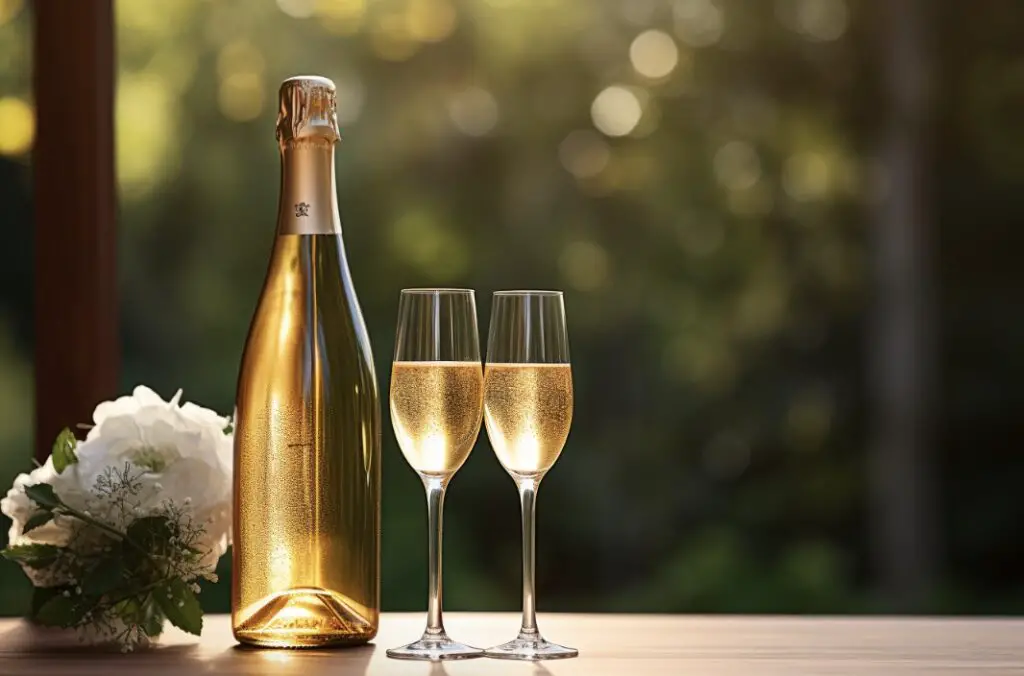
This can be done using the traditional method (similar to Champagne) or the Charmat method, which involves fermenting the wine in a pressurized tank.
Sparkling Riesling wines are typically dry to semi-sweet and have a lively effervescence that makes them perfect for celebrations and aperitifs.
Carbonation in Wines
Carbonation in wines is the result of the fermentation process, during which yeast consumes sugar and produces alcohol and carbon dioxide (CO2). In most wines, the CO2 is allowed to escape during fermentation, resulting in a still wine. However, in sparkling wines, the CO2 is trapped, creating bubbles and effervescence.

Natural Carbonation
Some wines, including certain Riesling wines, may have a slight effervescence due to the natural carbonation that occurs during fermentation. This is often referred to as “spritz” or “petillance”. This can be the result of a small amount of residual sugar in the wine, which continues to ferment after bottling, producing a small amount of CO2. This natural carbonation is typically minimal and does not qualify the wine as a true sparkling wine.
Force Carbonation of Wine
In addition to natural carbonation, another method of carbonating wines is through force carbonation. Force carbonation is a process in which carbon dioxide is intentionally added to the wine under pressure, allowing for precise control over the level of carbonation.
One common method of force carbonation involves using a carbonation stone or a carbonation system. A carbonation stone is a porous stone that is connected to a gas source, typically carbon dioxide. The stone is submerged in the wine, and the gas is released through the tiny pores, creating small bubbles that dissolve into the liquid. This process can be adjusted to achieve the desired level of carbonation, from a subtle effervescence to a more pronounced fizz.
Another method of force carbonation involves using a carbonation system, such as a counter-pressure filler or a carbonation tank. With a counter-pressure filler, the wine is first chilled and then carbonated by introducing carbon dioxide under pressure while the bottle is sealed. This method allows for consistent carbonation levels and is often used in commercial operations.
Carbonation can also be achieved by fermenting the wine in a sealed container, such as a pressure tank or a keg, with the addition of a specific amount of sugar and yeast. This process, known as the Charmat method, allows the carbon dioxide produced during fermentation to dissolve into the wine, resulting in a sparkling wine.
Force carbonation offers winemakers more control over the carbonation process and allows for the creation of a range of sparkling wine styles, from lightly sparkling to highly effervescent. It is commonly used for producing sparkling wines such as Prosecco and some styles of sparkling rosé.
It’s worth noting that force carbonation is often used for wines that are intended for immediate consumption, as the bubbles created through this method can dissipate more quickly compared to wines that undergo traditional secondary fermentation in the bottle. Therefore, force carbonated wines are typically enjoyed while they are still relatively young and fresh.
Overall, the use of force carbonation provides winemakers with a versatile tool to create a variety of carbonation levels in wines, expanding the range of options available to wine enthusiasts seeking different levels of effervescence in their beverages.
Conclusion
In conclusion, while Riesling wine is not typically considered a carbonated wine, some variations may exhibit a slight effervescence due to the winemaking process. Riesling is a versatile and highly regarded grape variety that produces a wide range of wine styles, from dry to sweet, and even sparkling. The world of Riesling wine is as diverse as it is delicious, and there is a style to suit every palate.
10 Riesling Wine Facts
1. Riesling is a white grape variety originating from the Rhine region of Germany.
2. Riesling wines are known for their high acidity and fruit-forward flavors.
3. The grape variety is used to produce dry, semi-sweet, sweet, and sparkling white wines.
4. Riesling has a long history dating back to the 15th century.
5. The versatility of Riesling allows it to be grown in many wine regions around the world.
6. Dry Riesling wines have no residual sugar and pair well with a wide range of foods.
7. Semi-sweet Riesling wines have a small amount of residual sugar and are excellent for pairing with spicy foods.
8. Sweet Riesling wines are made by allowing the grapes to ripen longer on the vine and can be aged for many years.
9. Sparkling Riesling wines, also known as Sekt, are made by fermenting the wine a second time to create carbonation.
10. Some Riesling wines may have a slight effervescence due to natural carbonation during fermentation.
FAQs
Is Riesling white wine sparkling?
No, Riesling is not a sparkling white wine. It is typically produced as a still or dry wine, although it can also be made in off-dry or sweet styles. Sparkling wines are produced using different methods, such as the traditional method or the Charmat method, and Riesling is not typically used for sparkling wine production.
Is Riesling similar to Champagne?
No, Riesling and Champagne are not similar. Riesling is a white grape variety primarily known for producing aromatic and often sweet wines. It is grown in various regions around the world, including Germany, France, and the United States. On the other hand, Champagne refers to a specific sparkling wine produced in the Champagne region of France using a blend of different grape varieties, including Chardonnay, Pinot Noir, and Pinot Meunier. Champagne is known for its unique production method, aging process, and characteristic bubbly nature. While both Riesling and Champagne are popular wine choices, they are distinct in terms of grape variety, production method, and flavor profile.
Why does Riesling taste fizzy?
Riesling can sometimes give the impression of being fizzy due to its high acidity. The acidity in Riesling can create a lively and zesty sensation on the palate, which can be perceived as a slight effervescence or fizziness. This characteristic can enhance the wine’s freshness and make it appear vibrant.
What kind of wine is carbonated?
Carbonated wine is typically referred to as sparkling wine. It is made by inducing a secondary fermentation process in the bottle, which creates bubbles of carbon dioxide. Some well-known examples of sparkling wine include Champagne, Prosecco, and Cava.
Do all wines have carbonation?
No, not all wines have carbonation. Carbonation refers to the presence of bubbles or fizziness in a beverage, which is typically a characteristic of sparkling wines or Champagne. Most wines are still, meaning they do not have carbonation and are not fizzy.
What category of wine does not contain carbonation?
Still wines, also known as non-sparkling wines, do not contain carbonation. These wines are typically fermented until they reach a still, non-effervescent state.

